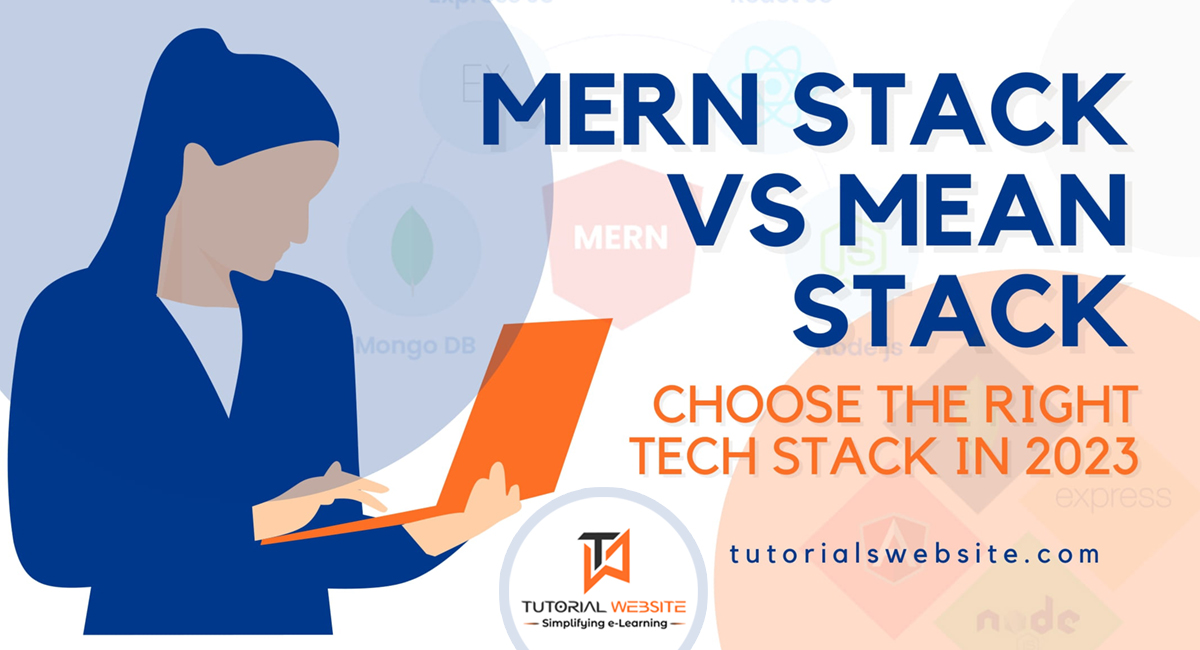If you are an entrepreneur or an IT project lead in an organization, you have come across numerous technologies to develop your web app and mobile app. And with your research comes along queries like what is tech stack, how MEAN or MERN can help with your project. Then keep reading this post to get a thorough picture of what these two stacks are, their benefits, and the fundamental differences between them. And rest assured, it will resolve your dilemma, and you can easily pick the right option for your project.
What is a Technology Stack?
The technology stack comprises frameworks, databases, and runtime environments and is necessary to operate an application. While there are various specific front-end and back-end technologies for the respective parts of the development, full stack provides the best of both worlds. The finest examples of this are MERN and MEAN stacks. There are many debates about which one is most suitable. The distinction between MEAN and MERN stacks is that MEAN uses AngularJS as a front-end network, while MERN uses ReactJS.
MEAN Stack:
MEAN is the abbreviation of MongoDB, ExpressJS, AngularJS, and NodeJS. With MEAN stack’s easy-to-learn approach, developers have been able to reduce development time to a substantial level. It helps in the start-up culture where a quick turnaround time is not a luxury but a necessity. And nowadays, a growing number of software development companies are making sure they hire mean stack developers who are capable of building a complete web or app from square one without inconsistencies.
So without further ado, let us discover the advantages of the MEAN stack.
Benefits of MEAN Stack
- It is easy to develop all types of applications.
- Light-weight application architecture
- JavaScript is used throughout all coding. Thereby reducing learning time and strengthening coordination.
- Compatible with numerous plug-ins and widgets. This is useful for projects with a tighter deadline.
- Plug-ins increase functionality exponentially.
- Due to the framework’s open-source nature, developers enjoy community support.
- Tests can be conducted in real-time using the built-in tools.
MERN Stack
MERN is the abbreviation of MongoDB, ExpressJS, ReactJS, and NodeJS. With the MERN stack, you get to develop scalable solutions while maintaining consistency across data centers and accomplish simple yet sophisticated UI rendering for your app.
Benefits of MERN Stack
- Only JAVA and JSON are required for the entire process.
- A streamlined development process based on the MVC architecture.
- Smoother user interface development
- The Model View Controller architecture automates the development process to deliver powerful end-to-end solutions.
There are many similarities and differences between MEAN and MERN stack. Let us go over them one by one, so you can get a broader perception of how it relates to each other and the aspects that make them unique.
Similarities between MEAN and MERN
You have probably noticed that MEAN and MERN stacks are similar in a few ways, and yes, it is true! Both stacks share the following building blocks:
MongoDB
It is an open-source, cross-platform, document-centric, extensible NoSQL database. Its flexibility enables users to set up tables, schemas, and more. MongoDB comes with Mongo Shell, a JavaScript interface for querying, updating, and deleting records. This database includes a simple environment configuration and contains the application data.
ExpressJS
ExpressJS is a dominant open-source back-end web framework based on Node.js. It allows developers to manage HTTP requests, develop APIs and display basic routing. To simplify code writing, this flexible framework makes use of middleware and facilitates code reusability.
NodeJS
Node.js is a prominent Javascript open-source runtime environment. By facilitating asynchronous event-driven programming, it enables the development of scalable web applications. There is also a growing developer community that supports Node.js, which means you can access plenty of useful open-source tools and frameworks.
Other overlapping features between MEAN and MERN stacks include
- Both stacks support MVC (Model View Controller) Architecture.
- Developers can access a pre-built set of testing tools in both cases.
- In both stacks, developers have access to pre-built testing tools.
- A notable application security vulnerability cited by the “OWASP Top Ten 2017” report is “Cross-Site Scripting” (XSS). MEAN and MERN both provide protection against this threat.
Differences between MEAN and MERN
| MEAN stack | MERN stack |
| AngularJS is a part of the tech stack- An open-source frontend JavaScript framework that expresses various syntaxes using HTML syntax. | ReactJS is a part of the tech stack- An open-source JavaScript library to create UI Components and the interface |
| There is a medium but steep learning curve. | There is a relatively short learning curve. |
| The data flow is bidirectional. | The data flow is unidirectional. |
| Scalability is relatively less. | Scalability is MERN’s strongest suit. |
| In terms of performance, it maintains better abstractions in your coding and manages the files efficiently. | Since React JS is merely a library, it performs relatively well compared to Angular JS. and developers can code at a faster pace. |
| It results in better productivity. | It results in decreased productivity. |
| MEAN is backed by Google Inc. | MERN is backed by Facebook Inc. |
| Data binding in one way & two way | Only one way data binding is possible. |
| Regular DOM is used | Virtual DOM is used. |
| For CRUD (create,read, update, delete) comparatively less-selected option. | For CRUD, MERN is an ideal pick. Data changes are handled quickly by React JS, and a simple and advanced user interface is a plus. |
| It possesses ready-to-use features to support multiple third-party libraries. | React.js requires additional libraries to support such calls. |
Things to consider before choosing the right stack for your project
- Project objective
- Upgradation and Maintenance
- New practices
- UI requirements
- Third-party Support
- Protection of data and extensibility
- Cost of Development
Upon all aspects are addressed
In the close-knit contest between MEAN and MERN stacks, choosing one can be challenging. Both technologies share many reliable characteristics including excellent functionality. However, they differ in certain critical criteria, such as their structure, which makes MEAN a better choice for large-scale applications and powerful front-end development, while MERN is better suited to smaller applications and those apps that heavily rely on user interface elements. Hence, you should choose the MEAN stack vs MERN stack based on your company’s needs when developing a desired digital product.

Suvarna Parikh is a Tech content writer at ultroNeous Technologies. She contributes articles on various topics and balances the informative content with an engaging read. (Hooks are always there.) When she is not writing and editing, you can find her reading or watching thriller dramas.





